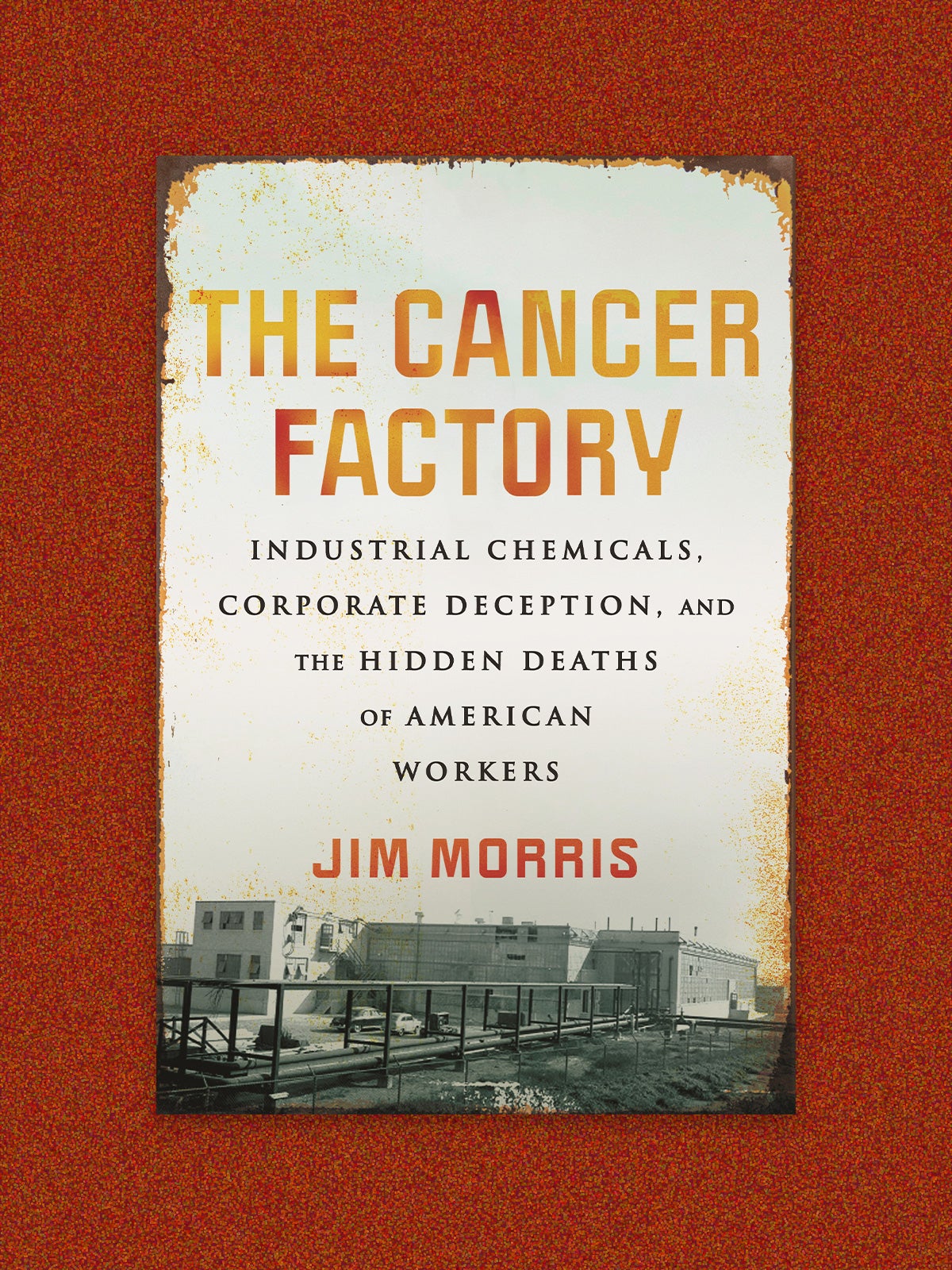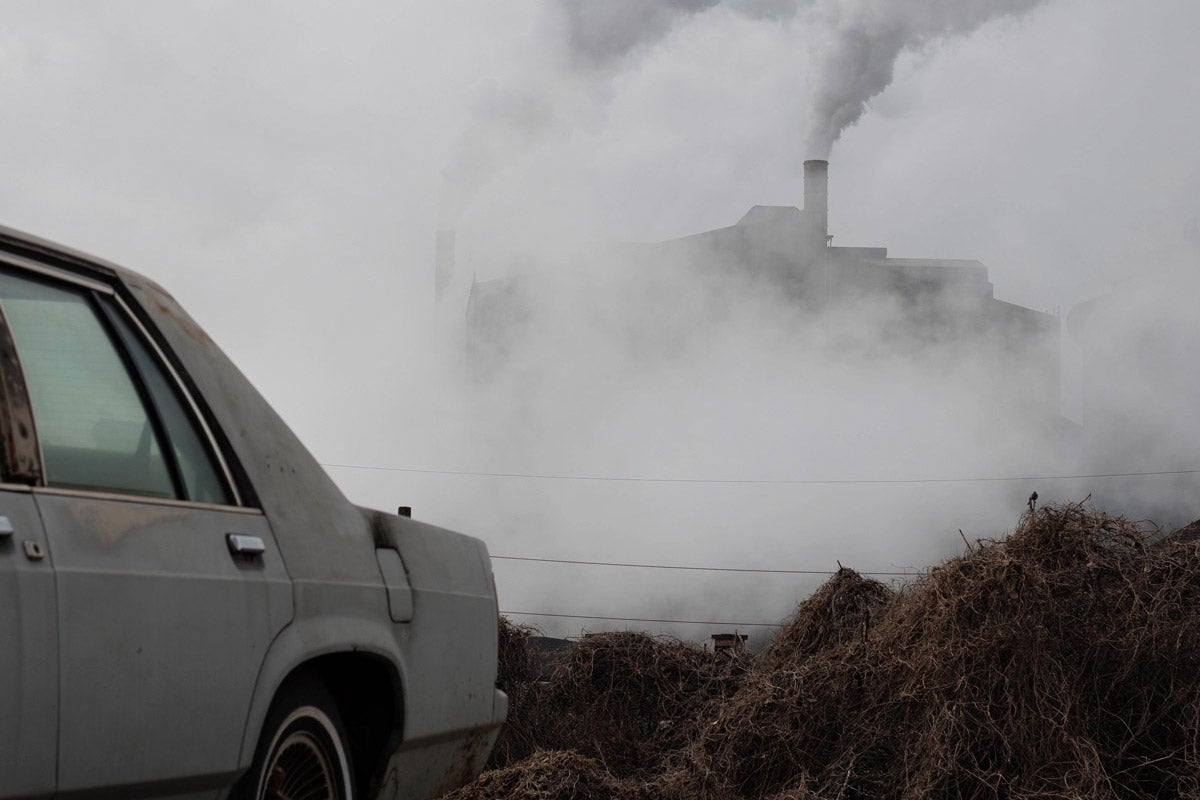
Book
A toxin that won’t quit
Sometimes, cancer runs in the family. Other times, cancer runs in the factory. At Goodyear’s chemical plant in Niagara Falls, New York, the workers “all know what happens when you start peeing blood,” according to Harry Weist, a retiree with recurrent bladder cancer who was interviewed by Jim Morris for The Cancer Factory. The book’s title portends the growth of the bladder cancer cluster that came to afflict at least 78 workers—a result of the factory’s hands-on work with ortho-toluidine. The chemical, now established to be a carcinogen, has been used by Goodyear as an ingredient in synthetic rubber tires since 1957. Don’t let the 20th century date mislead you—the chemical is nowhere near concluded history.
Sign up for Harvard Public Health
Delivered to your inbox weekly.
The Cancer Factory follows Harry and his father-in-law and other plant mechanics who got splashed or occasionally soaked by the chemical as they repaired pumps, scooped the gunk into cloth bags, hooked up hoses to rail tank cars, and cleaned inches-thick residue off reactor filters—without so much as respiratory protection or impermeable gloves. Their bedsheets would be stained brown, like a chalk outline of their workday’s exposures.
Recognition of the cancer cluster came in 1991, when federal health investigators found that 15 of the Goodyear plant’s workers had bladder cancer; Harry and his father-in-law would become case No. 37 and No. 21 in the more recent unofficial tally. The plant continues to use ortho-toluidine—now for more than 60 years.
Morris, a veteran investigative journalist and editor in chief of Public Health Watch, has followed the bladder cancer cluster since 1998 and reflects, “For American workers, the health scourges of the past can seem uncomfortably close at hand. That’s due largely to our collective amnesia about the toxic dusts, fumes, vapors, and liquids that exterminated too many of our ancestors and our flawed assumption that surely someone has taken care of that by now.” Not surely, at all.
In fact, we read that warnings about aromatic amine chemicals (including ortho-toluidine) emerged as early as 1895 in response to bladder cancer at dye factories in Europe. Scientific papers in 1952 (and more in the 1970s) reported evidence of ortho-toluidine producing bladder tumors in laboratory animals. As Morris documents, E.I. du Pont de Nemours and Company, the primary U.S. supplier of the chemical for Goodyear until 1995, professed that rodent tumors weren’t relevant to humans, chose not to conduct its own tests despite having a company toxicology lab, buried its calculations that the legal workplace exposure limit wasn’t protective, and downplayed safety concerns in letters to Goodyear—all while classifying ortho-toluidine as a “no-contact chemical” at its own DuPont Chambers Works chemical plant in New Jersey, where workers wore impermeable suits with supplied air.
Meanwhile, its customer, Goodyear, resisted implementing better monitoring of the workers’ exposure despite union concerns; the company didn’t improve protective controls until after federal inspection. Even with controls, in 2018 the Niagara Falls factory workers’ post-shift urine levels of ortho-toluidine were reportedly 42 times higher than what would be expected in someone not occupationally exposed to the chemical. In response to cases brought by affected workers, “corporate defendants wrote checks, insisted that the amounts be kept secret, admitted nothing, and largely avoided publicity,” Morris writes.
The Supreme Court actually held that workers are allowed to face a higher risk from a hazard (1 in 1,000 risk) than the general population can (1 in 1,000,000).
The safety concerns about ortho-toluidine, and other chemicals described in the book, should have been clear-cut: visible workplace exposures, decades of warnings, and documented clusters of cancer. Instead, Morris writes, it took “an improbable confluence of events…even to uncover the bladder-cancer epidemic at Goodyear in Niagara Falls, let alone to address it.” What does this mean for other chemicals that go untested and other factories that go uninspected?
Many remain that way. Federal chemical regulation has historically treated chemicals as safe until proven otherwise, so decades often pass before a hazard is confirmed and addressed, if ever. After all, it’s easier to cast doubt on a hazard than to prove its certainty. An interview in The Cancer Factory explains that the burden of proof still rests on the Environmental Protection Agency—not on manufacturers—to determine health risks of some 86,000 chemicals grandfathered in by law. But it would take the agency approximately 1,500 years to evaluate just 10 percent of those chemicals.
Meanwhile, Morris explains, the Occupational Safety and Health Administration has only been able to set 470 workplace-exposure limits—and even those few limits are often based on old science or are not strict enough. The Supreme Court actually held that workers are allowed to face a higher risk from a hazard (1 in 1,000 risk) than the general population can (1 in 1,000,000). Enforcement is a whole other challenge: In 2021, OSHA only had one inspector for every 81,000 workers. When it comes to worker protection, “the problem isn’t one of science or technology,” Morris reckons; we have “stunning advances in medicine but an impoverished environment in which to apply them.”
The lack of response to known problems is the shock of The Cancer Factory. Morris draws on decades of depositions, interviews, and records from many different workplace chemical injustices. He skillfully weaves together voices of cross-generational workers, their families, and their advocates, never sugarcoating the harrowing details of factory conditions or the painful consequences of urethral tests and cancer treatments. The book succeeds at calling out failures in every level of the system but leaves the reader with an aftertaste of grim helplessness: Where do we even begin to fix a system that has, time and time again, put workers’ health last?
Book cover: Beacon Press


